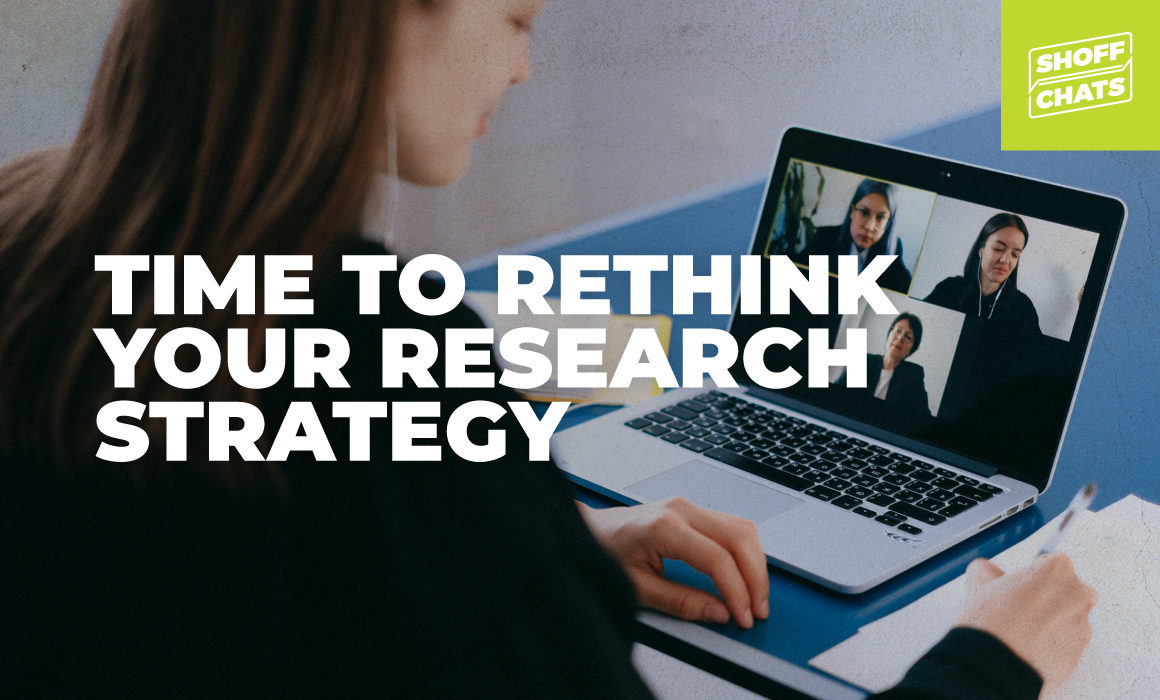Time To Rethink Your Research Strategy
Last year was a year of disruption, to say the least. It challenged us to think and work differently. Disruption often leads to more efficient and effective solutions, as is the case in how to approach market research in an ever-changing world.
In a recent Shoff Chat, RJ Gerard from SMARI and Ben Carlson from MarketCast, discussed how research has had to adapt quickly to meet the speed and frequency needed by today’s marketer.
Here are some key takeaways:
Shake things up
You can’t expect market research to be conducted the way you’ve always done it. That doesn’t mean you skip it until things go back to “normal.” Gerard explained how qualitative research transitioned smoothly to online and became the go-to for conducting focus groups.
“Online, you can still watch the nonverbals, recruiting is actually much easier, participation is higher, and we’ve removed a lot of the barriers for people to participate. It’s just easier to do for the participants,” he said.
The need for speed
Research has to keep up with the speed customer behavior is changing. The days of conducting large scale research every few years must switch to using multiple research applications from the arsenal of tools, more frequently. The benefit of conducting research more frequently lies in the ability to gather insights from a 360-degree approach.
“We have to be creative. Online helps lower the costs and speed things up; it collapses the time equation, and we can unlock behavior faster,” said Carlson. “We have to use data science more frequently – we can’t just ask people their opinions, we have to look at their behaviors, which can be easier to do online. The toolkit of research is expanding.”
Contextualize before jumping to conclusions
With an always-on approach to research, it is very important to make sure you apply context. Especially if you’re conducting real-time research through social media. So often we can get stuck on something negative but when you dive into who said it and why, you often realize it doesn’t have the negative impact you thought.
“We have to be sure the client understands the context of what they’re seeing. Who is saying it, what are they saying, and contextualize it in other ways such as when they’re saying it and the quantity or size of the feedback,” Carlson said.
Invite research to the table early
If you want to get the most bang for your buck, bring your research partners in at the very beginning. Instead of contacting a research partner with “I want you to do X” ask them “our goal is to understand X, Y, and Z…what research approach should we take to capture the insights we need?” The earlier you engage research experts, the more value and higher return-on-investment you’ll receive, according to Gerard.
Research has always been an essential tool to gain valuable insights for businesses and organizations. And with all the change we’re experiencing, it’s more important than ever to understand peoples’ shifting attitudes and behaviors. The good news is that it’s now easier than ever to get comprehensive and timely information thanks to the many safe, efficient and cost-effective methods available.
Need help building the right research strategy for your organization? Contact Dominique Gilmour.
Listen to this episode or past Shoff Chats episodes here.


